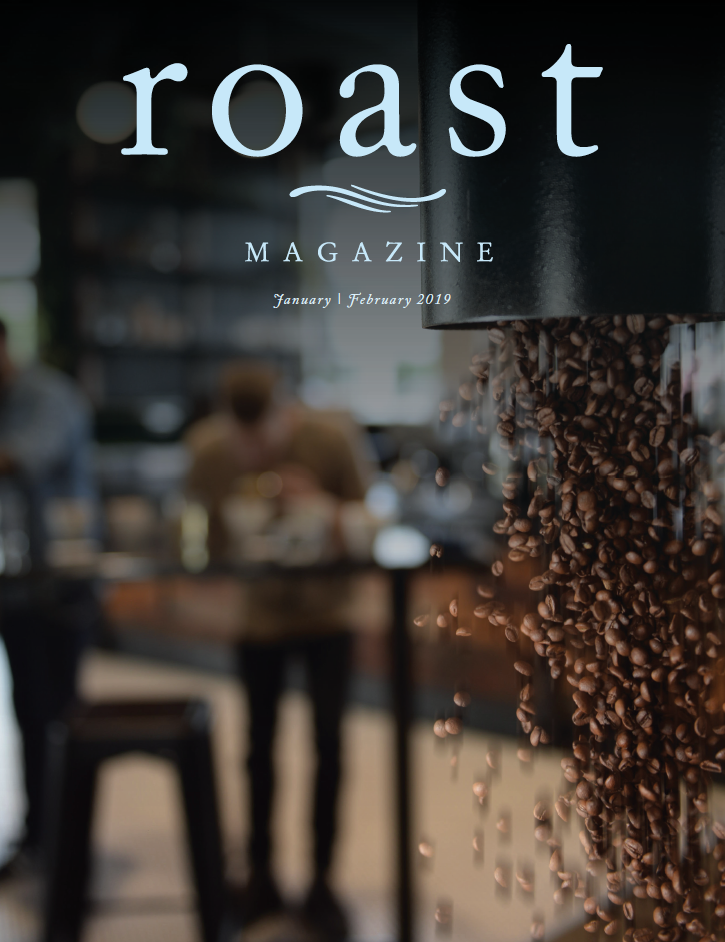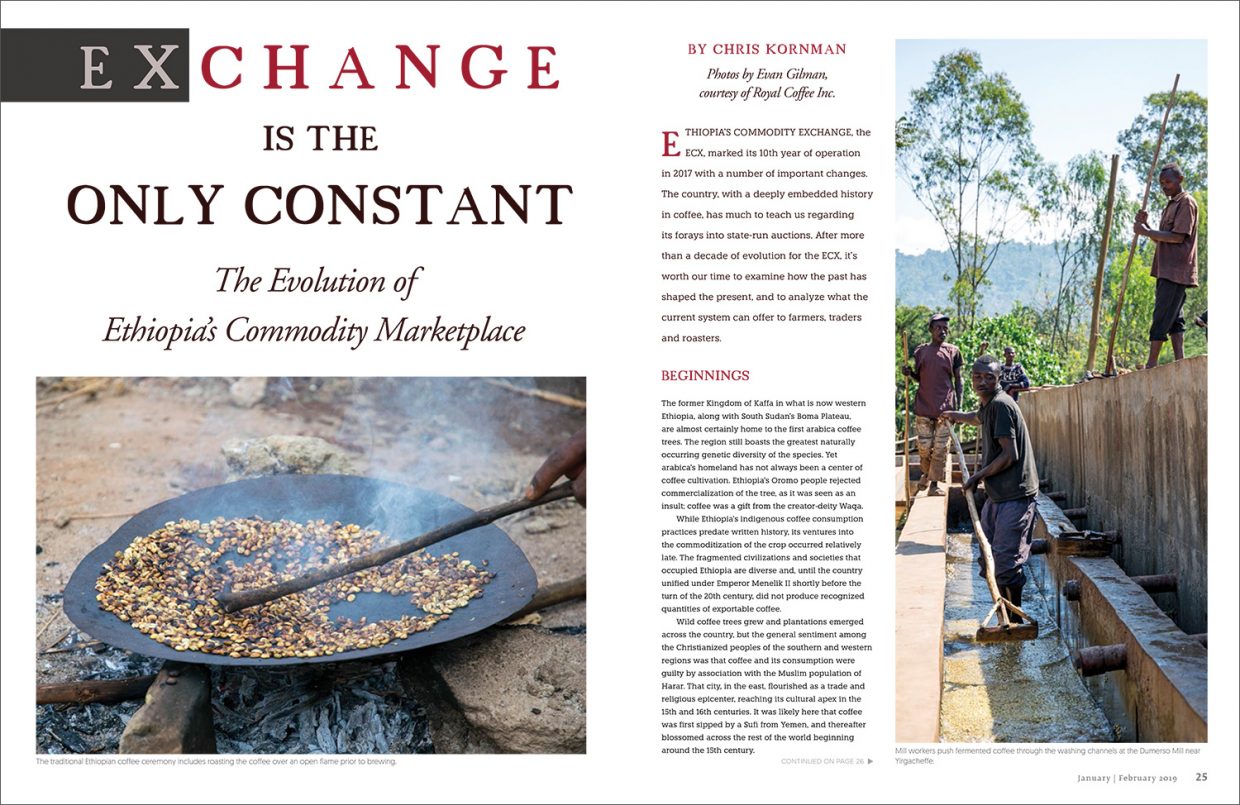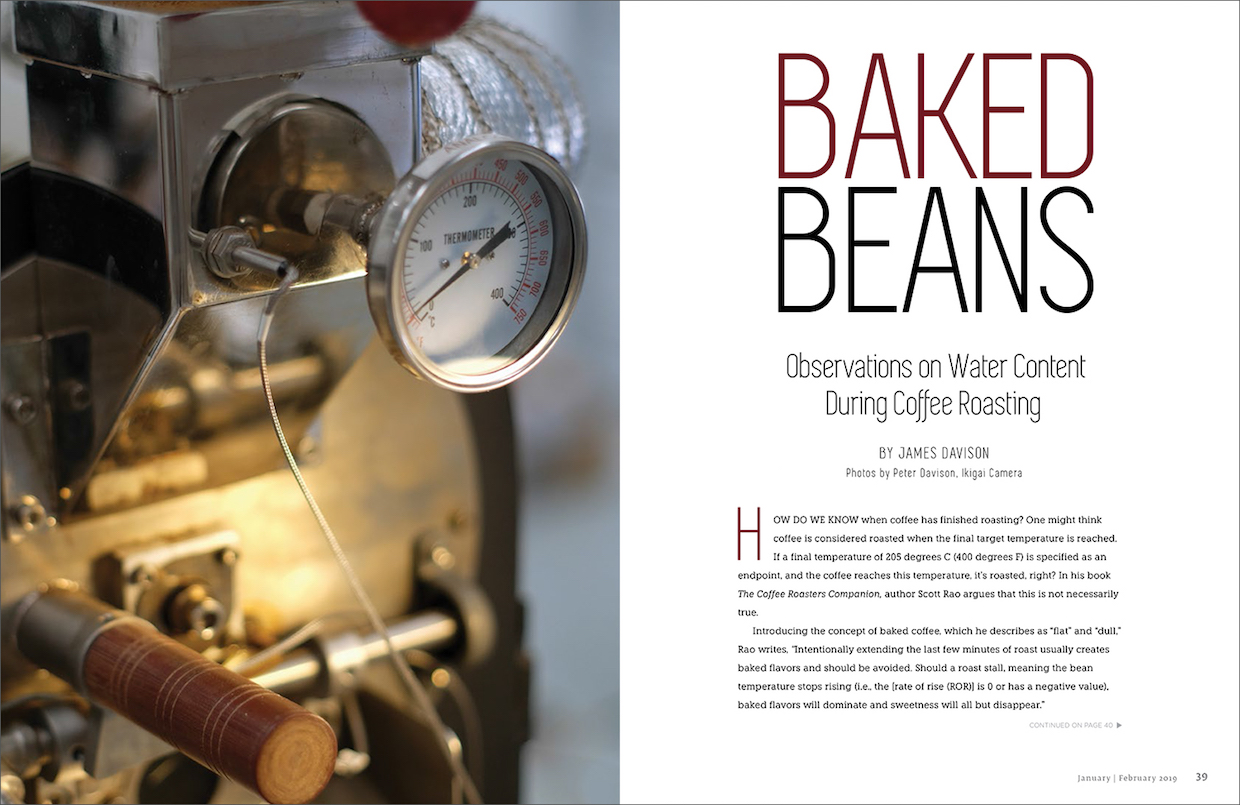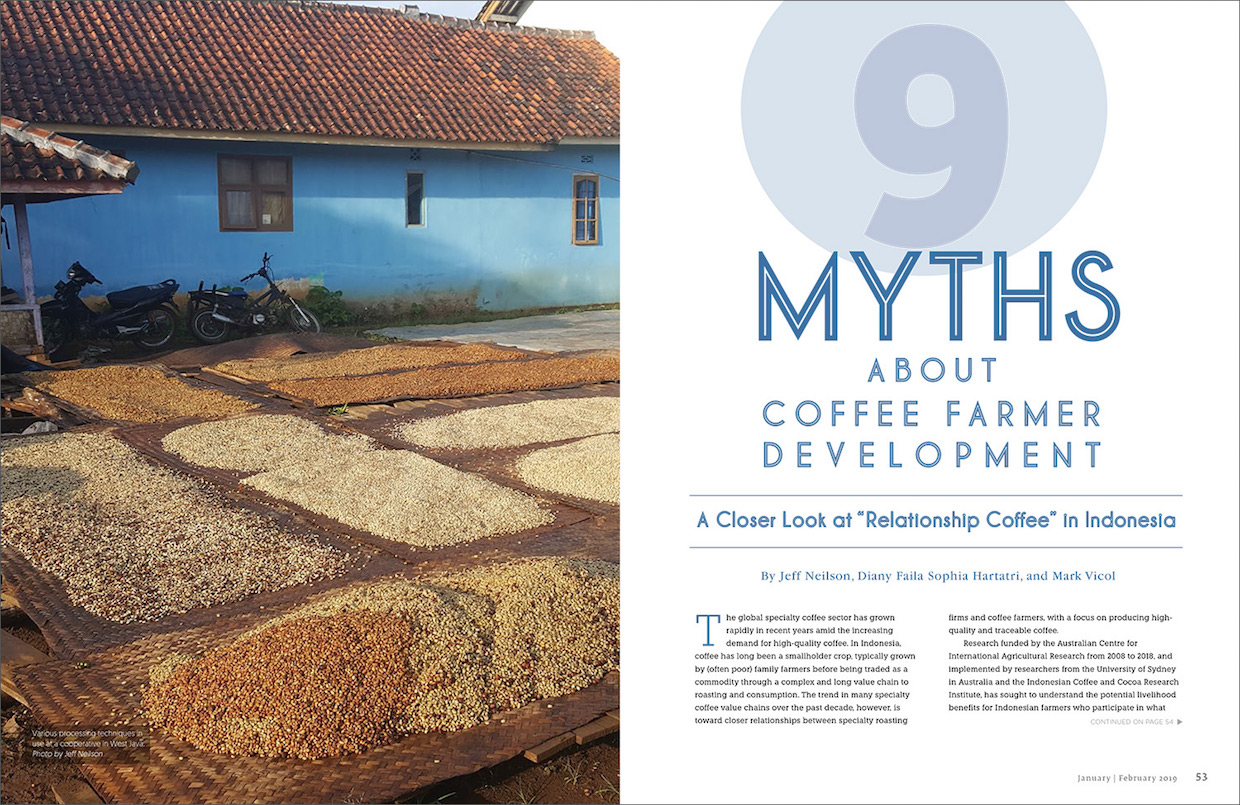
Roast magazine January/February 2019 issue. Cover photo by Mark Shimahara.
The January/February issue of Roast magazine has been released. The issue features in-depth coverage of Ethiopia’s commodity marketplace; observations on water content during roasting; and a closer look at “Relationship Coffee” in Indonesia. Subscribers to Roast magazine receive free digital access. Subscribe to Roast magazine, or purchase the print version of this issue here.
Inside This Issue

Chris Kornman, the lab and education manager at The Crown: Royal Coffee Lab & Tasting Room, takes a look at the evolution of Ethiopia’s commodity marketplace in “Exchange is the Only Constant.”
Ethiopia’s Commodity Exchange, the ECX, marked its 10th year of operation in 2017 with a number of important changes. The country, with a deeply embedded history in coffee, has much to teach us regarding its forays into state-run auctions. After more than a decade of evolution for the ECX, it’s worth our time to examine how the past has shaped the present, and to analyze what the current system can offer to farmers, traders and roasters.

In “Baked Beans: Observations on Water Content During Coffee Roasting,” chemical engineer and founder of Williamstown Roasters, James Davison, explores how studying the water leaving the roaster during the roasting process might provide an explanation for how “baking” occurs.
How do we know when coffee has finished roasting? One might think coffee is considered roasted when the final target temperature is reached. If a final temperature of 205 degrees C (400 degrees F) is specified as an endpoint, and the coffee reaches this temperature, it’s roasted, right? In his book The Coffee Roasters Companion, author Scott Rao argues that this is not necessarily true.

A collaboration between Jeff Neilson and Mark Vicol of the University of Sydney, and Diany Faila Sophia Hartatri of the Indonesian Coffee and Cocoa Research Institute, “9 Myths About Coffee Farmer Development” takes a closer look at “relationship coffee” in Indonesia.
The global specialty coffee sector has grown rapidly in recent years amid the increasing demand for high-quality coffee. In Indonesia, coffee has long been a smallholder crop, typically grown by (often poor) family farmers before being traded as a commodity through a complex and long value chain to roasting and consumption. The trend in many specialty coffee value chains over the past decade, however, is toward closer relationships between specialty roasting firms and coffee farmers, with a focus on producing high-quality and traceable coffee.
Features
Exchange Is the Only Constant
The Evolution of Ethiopia’s Commodity Marketplace
Baked Beans
Observations on Water Content During Coffee Roasting
Nine Myths About Coffee Farmer Development
A Closer Look at “Relationship Coffee” in Indonesia
Columns
From the Publisher
News Item
Capturing Kona: Preserving the Big Island’s Coffee Heritage
Technically Speaking
Temperature Uncertainty: An Overview of Temperature Measurements in Coffee Roasting
The Coffee Review
Natural-Process Espressos: Fruit and Chocolate Exalted
Flamekeeper
Notes from Roaster Camp 2018
First Crack
Hot Products & Fresh Press






Comment